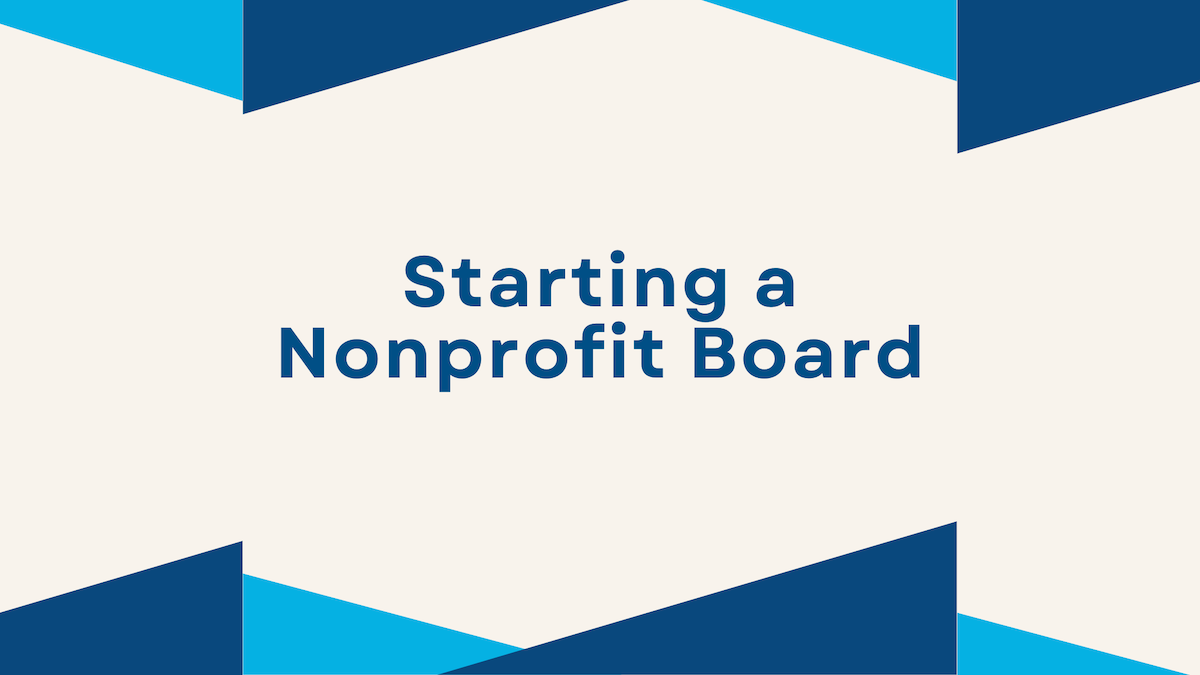Starting a nonprofit board is a crucial step toward creating a well-organized and successful nonprofit organization. A well-established board provides the strategic guidance, oversight, and expertise necessary to support your nonprofit’s mission and long-term sustainability.
If you’re wondering where to begin, this guide breaks down the essential steps to help you build a nonprofit board that truly makes an impact.
Nonprofit Resources
The Charity Charge resource hub is dedicated to providing tips, tools, and information to help your nonprofit create and grow a modern organization. Learn more
What Is a Nonprofit Board?
The board of directors is the governing body responsible for ensuring a nonprofit remains aligned with its mission and follows ethical and legal standards. The board typically oversees the organization’s financial health, strategic direction, and executive leadership.
Key Responsibilities of a Nonprofit Board
A nonprofit board holds many responsibilities, including:
- Ensuring the organization remains mission-focused.
- Setting strategic goals and assessing progress.
- Overseeing financial health, including approving budgets.
- Ensuring compliance with legal and regulatory requirements.
- Supporting the executive director or CEO and providing performance oversight.
By understanding these key responsibilities, you can better envision the qualities and expertise needed in your board members.
Steps to Starting a Nonprofit Board
1. Define Your Nonprofit’s Mission and Vision
Before forming a board, ensure you have a clear and compelling mission and vision. These statements serve as the guiding principles for your organization and will help attract individuals who are passionate about your cause.
- Mission Statement: Defines the purpose of your nonprofit, what it aims to accomplish, and whom it serves.
- Vision Statement: Describes the future impact you hope to achieve through your organization.
When prospective board members understand the mission and vision, they can determine if their values align with the organization’s goals.
2. Identify the Required Skills and Qualities
Once you know your nonprofit’s mission, identify the skills and expertise needed for the board. Consider a mix of backgrounds, such as finance, legal, fundraising, marketing, and program management. The ideal board should have diverse skills to provide well-rounded oversight and strategic direction.
Qualities to Look for in Board Members:
- Passion for the Mission: Members should genuinely care about the nonprofit’s cause.
- Relevant Expertise: Financial, legal, fundraising, or specific industry knowledge can be invaluable.
- Willingness to Participate: Board members should be ready to attend meetings, contribute time, and participate in committee work.
- Leadership Skills: Experience in leadership roles is helpful for guiding the organization and managing challenges.
3. Recruit and Select Board Members
To start recruiting, leverage your existing networks, and don’t hesitate to reach out to community leaders, professionals, and other nonprofits for referrals. You can also advertise open board positions on job boards and nonprofit networking websites.
Tips for Effective Board Member Recruitment:
- Create a clear job description for board positions, outlining expectations, responsibilities, and required time commitments.
- Share information about the nonprofit’s mission, vision, and values.
- Conduct interviews with potential board members to ensure a good fit.
- Encourage candidates to ask questions about the role and commitment involved.
4. Develop Bylaws and Governance Policies
Bylaws are the rules governing the board’s operations and structure. They outline essential details, such as board member roles, terms, meetings, and voting procedures. Governance policies clarify board expectations and establish best practices for ethical and transparent operations.
Key Elements of Bylaws and Governance Policies:
- Board Member Roles and Terms: Define positions (such as Chair, Vice-Chair, Treasurer, Secretary), term limits, and election procedures.
- Meeting Frequency and Quorum Requirements: State how often the board meets and the number of members needed for a quorum.
- Conflict of Interest Policy: Address potential conflicts to ensure board members act in the organization’s best interest.
- Decision-Making Procedures: Establish clear guidelines for decision-making and voting.
Working with an attorney or governance expert can be helpful to ensure that bylaws and policies are comprehensive and legally sound.
5. Plan Board Orientation and Training
After recruiting board members, provide an orientation to familiarize them with the nonprofit’s mission, programs, financial status, and governance policies. Ongoing training is also essential to keep board members informed about changes in the nonprofit sector, compliance requirements, and best practices for board leadership.
Components of a Successful Board Orientation:
- Introduction to Programs and Initiatives: Provide an overview of the nonprofit’s programs and strategic priorities.
- Financial Overview: Discuss the nonprofit’s budget, financial reports, and fundraising strategies.
- Review of Bylaws and Governance Policies: Explain the board’s responsibilities and ethical expectations.
- Opportunities for Engagement: Highlight ways board members can get involved in fundraising, advocacy, and community outreach.
6. Establish Clear Communication and Reporting Practices
Effective communication is critical to ensuring that the board and the nonprofit’s leadership are aligned and working together toward shared goals. Schedule regular meetings, share updates on the organization’s progress, and encourage open dialogue among board members.
Best Practices for Board Communication:
- Schedule regular meetings, such as quarterly or bi-monthly, to review progress and address any issues.
- Share board meeting agendas and reports in advance to allow members to prepare.
- Encourage feedback and facilitate open discussions during meetings.
- Maintain transparency by providing regular updates on the nonprofit’s financial status, programs, and impact.
7. Set Goals and Monitor Performance
Finally, the board should establish specific, measurable goals aligned with the nonprofit’s mission and strategic plan. Regularly evaluating the board’s effectiveness and the nonprofit’s progress helps ensure accountability and continuous improvement.
Ways to Track and Evaluate Board Performance:
- Use key performance indicators (KPIs) to monitor the nonprofit’s impact and financial health.
- Schedule an annual board evaluation to assess individual contributions and collective performance.
- Adjust strategies and set new goals based on performance reviews and nonprofit needs.
Frequently Asked Questions
What is the minimum number of board members required for a nonprofit?
Most states require a minimum of three board members for a nonprofit, though it may vary depending on local regulations. However, a larger board often brings a more diverse range of perspectives and skills.
Can board members be paid in a nonprofit organization?
Generally, board members in a nonprofit serve as volunteers. However, some nonprofits may compensate board members for certain services, although this can create potential conflicts of interest.
How often should nonprofit boards meet?
The frequency of board meetings depends on the organization’s needs, but most boards meet at least quarterly. More frequent meetings may be necessary for smaller or newer nonprofits.
What should be included in a board member job description?
A board member job description should outline the role’s responsibilities, time commitment, expected contributions, and specific skills or expertise required.
How can I find potential board members?
Consider reaching out to your professional network, local community leaders, and using online platforms that connect nonprofits with prospective board members. Additionally, professional organizations and volunteer boards may have members interested in serving.
Why is board diversity important?
Board diversity brings a range of perspectives, experiences, and ideas to the table. A diverse board helps ensure more comprehensive decision-making, improves community engagement, and strengthens the organization’s cultural competence.





